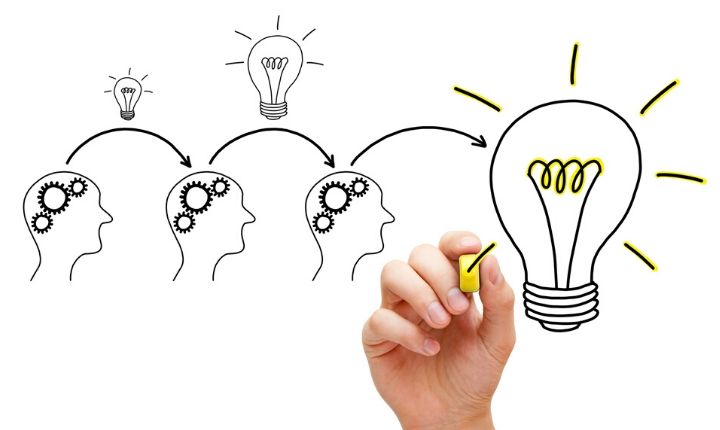
15 Apr The complex decision-making process of consumers during the purchase journey
According to (Rennie & Protheroe, 2021) the way consumers make choices is quite messy and increasingly complicated. Despite this, there are some certain concepts about this buying behavior. We understand, for example, that what happens between the trigger and the process of deciding to buy is not linear. Also that there is a complicated network of contact points that differs from person to person. However, what we still do not fully understand is how consumers process all the information and the options they find along the way. And a key point, which we focus on is understanding this new research.
As the internet evolved, it went from being a tool to buy prices to a tool to buy anything. This can be seen in how consumer behavior has changed over time in Google Search. Considering the terms ‘’best’’ and ‘’economic’’. At a global level, the interest in searching “better” is notably greater than the interest in searching “economic”. (Rennie & Protheroe, 2021)
On the one hand, the term ‘’economic’’ can vary its meaning depending on the person, it is still singular. On the other hand, “better” can have a wide variety of meanings, among which are: performance, popularity or quality.
These types of behaviors that we investigate, says Rennie (2021), occur in the middle, between the dissipative factor and the purchase. Given that the COVID-19 pandemic increased research and online shopping around the world, it is now more relevant than ever for brands to learn to make sense of it.
Applying the principles of behavioral science to the decision process
Last year, according to Protheroe (2021), we updated our perspective on the buyer’s decision-making process, thanks to behavioral science experts, The Behavioral Architects.
The goal was to understand how different consumers make their decisions in a linear environment where options abound and information is limited. It was discovered, we are told (Rennie & Protheroe, 2021) that people are able to deal with the difficulty scale by using cognitive biases deep in their minds.
What happens in the middle of the tour? Two mental modes
Through research, the updated model of decision-making began to take shape. In the center is the intermediate disorder: a complex space between triggers and the purchase, where you can win as you lose customers.
People need information about products and brands in certain categories; then they evaluate all the options. This corresponds to the different mental modes, in the intermediate disorder; discovery, an exploration activity, and evaluation, a restrictive activity. Whatever action it is, the person you take from a wide variety of sources on the web, such as social media, websites, aggregators, and search engines can be rated in one of these mental modes.
People repeat this cycle as many times as necessary to make a successful purchase decision. (Rennie & Protheroe, 2021)
Cognitive biases that influence purchasing decision making
Over time, people explore and evaluate the different possibilities in intermediate disorder, cognitive biases define buying behavior and influence why one product is chosen over another. Although there are hundreds of biases, the most relevant are six:
- Category discovery: Brief descriptions of relevant product specifications can summarize the purchase decision.
- The power of now: The longer you have to wait for a product, the more the proposal is discouraged.
- Social proof: Other people’s reviews or recommendations can make a big difference.
- Shortage bias: The more the availability or ‘stock’ of a product is reduced, the more desired it tends to become.
- Authority bias: Reliable sources or experts have a relevant influence on consumers.
- The power of free: A gift for the purchase, even if there is no link between it, can be important as a motivator.
These biases, they assure (Rennie & Protheroe, 2021) are the basis of the large-scale experiment with real buyers who simulate 310,000 purchase situations in the sectors: Consumer, public services, travel, mass consumption, retail and financial.
Within the experiment, consumers were asked to choose their first and second favorite brand from a category, and then various biases were used to determine whether people would switch preferences from one brand to the other. To test extreme scenarios, buyers were exposed to a totally new brand to analyze its behavior.
The results showed that even the least efficient competitor, a fictitious cereal brand, managed to gain up to 28% of consumer preference over one of the favorite brands when it offered different benefits, such as 5-star rating, 20% more than product for free. In an extreme case, a car brand gained 87% preference from consumers when it opted for all 6 biases in its offering.
(Rennie & Protheroe, 2021) They stated that this experiment taught us that, when used efficiently and responsibly, the principles of behavioral science are a powerful weapon to increase the number of consumers and maintain their preference.
How to create a successful marketing strategy in the mess in between
Although the clutter in between may seem complicated, it is important to remember that for consumers it feels like a normal purchase. The object is not to force people out of their buying loop, but to show them information and peace of mind necessary to make decisions.
The approach is the same as both large and small companies:
- Ensure the presence of your brand so that your products or services are present in the minds of consumers when they go to search engines.
- Uses behavioral science principles intelligently and responsibly.
- Close the gap between the trigger and the purchase that you’re existing and potential consumers spend less time with competitors.
- Build flexible and trained teams that can work multidisciplinary to avoid traditional structures away from brand development.
REFERENCES
Rennie, A., & Protheroe, J. (Maroz de 2021). Connet Americas. Obtenido de Connectamericas.com: https://connectamericas.com/es/content/c%C3%B3mo-es-el-complejo-proceso-de-toma-de-decisiones-de-los-consumidores-durante-el-recorrido
